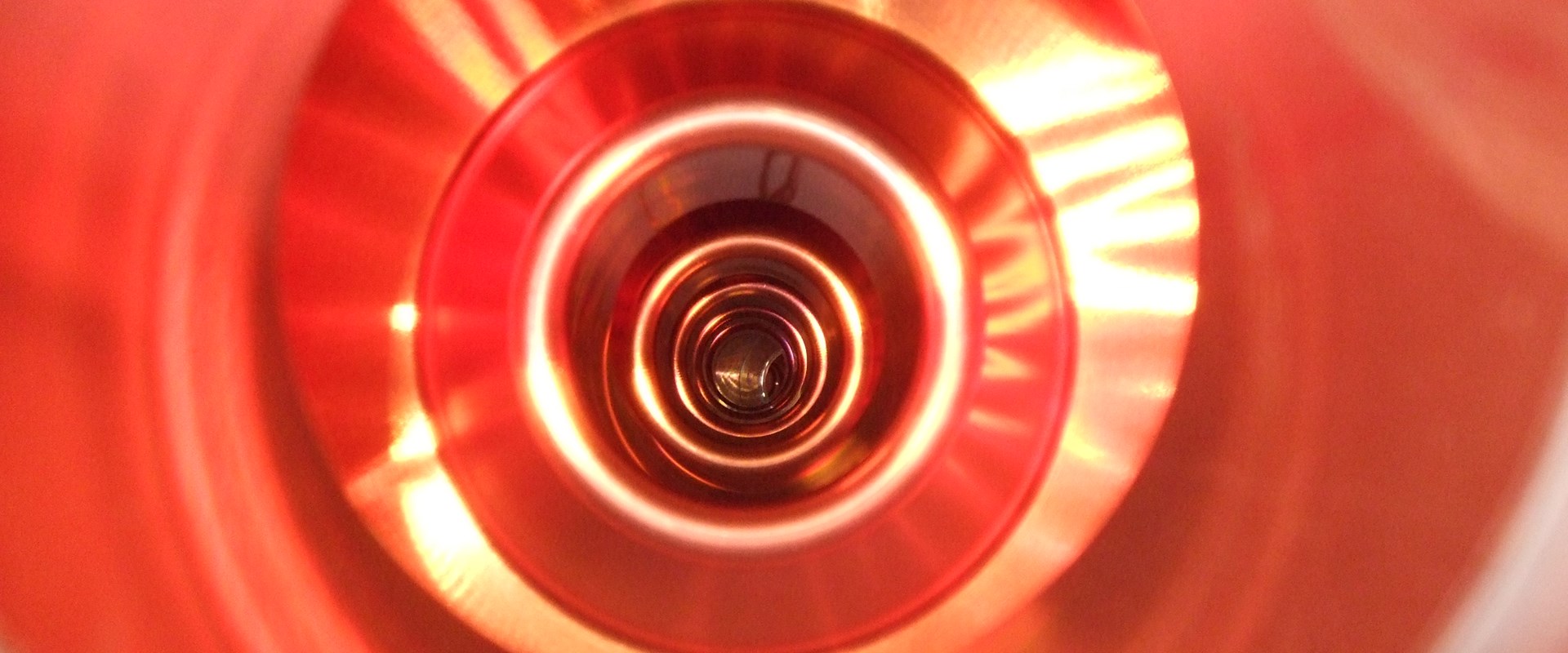National Museums Scotland has announced the acquisition of a copper accelerating cavity from CERN’s Large Electron Positron (LEP) collider. Donated by CERN (the European Organization for Nuclear Research), the 1.5 tonne copper cavity will go on display next year when six new science and technology galleries open at the National Museum of Scotland in Edinburgh.
Resembling a diving helmet from Victorian science fiction, it appears an unlikely component for a device designed to unlock the secrets of the universe. Despite its 1.5 tonne weight, the accelerating cavity was nevertheless just a tiny part of LEP.
The largest and most powerful electron-positron accelerator ever built, LEP was constructed in 1989, in a 27km-long circular tunnel 100m underground at CERN’s research centre near Geneva, Switzerland.
Tacye Phillipson, Senior Curator of Modern Science at National Museums Scotland, said:
CERN is at the forefront of current research into some of the most fundamental questions of physics, the very building blocks of the universe. The science and technology collections at National Museums Scotland reflect in various ways our efforts to understand these questions, and so we are delighted to be able to present a tangible, material link to this remarkable work in the forthcoming new galleries. What this particular object illustrates above all is the sheer quality of engineering required to enable the kind of scientific experiments carried out at CERN .
Peter Clarke, from the University of Edinburgh School of Physics and Astronomy, who worked on experiments carried out on LEP at CERN, said:
It is terrific news that this piece of hugely significant and recent science history is coming to the National Museum of Scotland. It’s a wonderful museum object which is very close to my heart as LEP was where I did some of my most exciting research. While most people will have heard of CERN, it can be quite difficult to explain what a particle collider actually does, but this cavity can illustrate this very easily. To have one of the accelerating cavities on display at the National Museum of Scotland can only be positive for scientific understanding and engagement,
In total, there were 128 of these accelerating cavities in LEP. Many are now used in science education and demonstrations around the world. The National Museums Scotland acquisition will be the only example on display in Scotland.
The eleven years of research conducted using LEP advanced understanding of the fundamental building blocks of matter and provided strong support for the Standard Model of particle physics. Experiments conducted using LEP proved that there are three – and only three – types of light neutrinos, and therefore probably only three generations in the two families of particles of matter.
LEP also provided evidence for the elusive Higgs boson, whose existence was eventually proven by experiments using LEP’s successor, the Large Hadron Collider (LHC).
Similar accelerating cavities, made of superconducting material rather than pure copper, are currently in use in the LHC, which has succeeded and replaced LEP in the same huge network of tunnels.
At CERN, the European Organization for Nuclear Research, physicists and engineers use the world's largest and most complex scientific instruments to study the basic constituents of matter – the fundamental particles that make up everything. In vast, underground experimental chambers, the particles are made to collide together at close to the speed of light. The process gives the physicists a detailed understanding about how the particles interact, and provides insights into the fundamental laws of nature.
The six new galleries are part of a £14.1 million project which will create ten new galleries displaying National Museums Scotland’s internationally important collections of science and technology, decorative art, design and fashion. Showcasing over 3,000 objects, display space for these exhibits will increase by over 40%, with three-quarters of them not having previously been on permanent display for generations.
The galleries will tell stories of discovery, invention and innovation in engineering, manufacturing, transport, telecommunications, energy, chemistry, physics and the life sciences. Displays and objects will highlight the contributions of eminent Scottish scientists such as Sir James Black, Sir David Jack, James Clerk Maxwell, Sir David Brewster and Professor Peter Higgs as well as stories and objects from around the world.
The new galleries will position the National Museum of Scotland as a centre for science engagement in Scotland, encouraging and inspiring people of all ages to develop an interest and awareness of scientific subjects.
Notes to Editors
- National Museums Scotland is one of the leading museum groups in the UK and Europe and it looks after collections of national and international importance. The organisation provides loans, partnerships, research and training in Scotland and internationally. Our individual museums are the National Museum of Scotland, the National Museum of Flight, the National Museum of Rural Life and the National War Museum. The National Museums Collection Centre in Edinburgh houses conservation and research facilities as well as collections not currently on display.
- The National Museum of Scotland reopened in summer 2011 following a three-year, £50m redevelopment. With over 6.5 million visitors since reopening, the National Museum of Scotland is the most popular museum in the country outside of London (source: Association of Leading Visitor Attractions). It was also voted the number one museum in the UK in TripAdvisor’s inaugural Travellers’ Choice Awards.
For further information and images please contact Bruce Blacklaw, Alice Wyllie, Esme Haigh or Susan Gray, Press Office, National Museums Scotland, tel 0131 247 4165, b.blacklaw@nms.ac.uk
Header image: Inside view of accelerating copper cavity.

